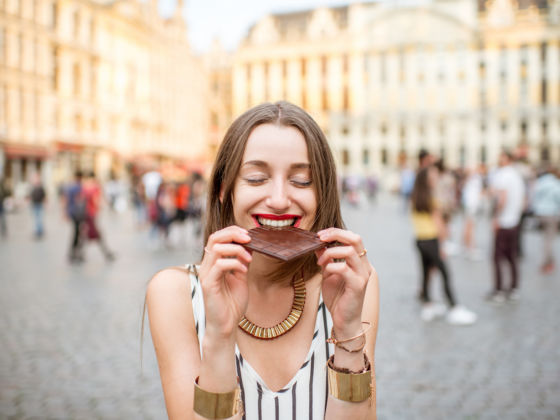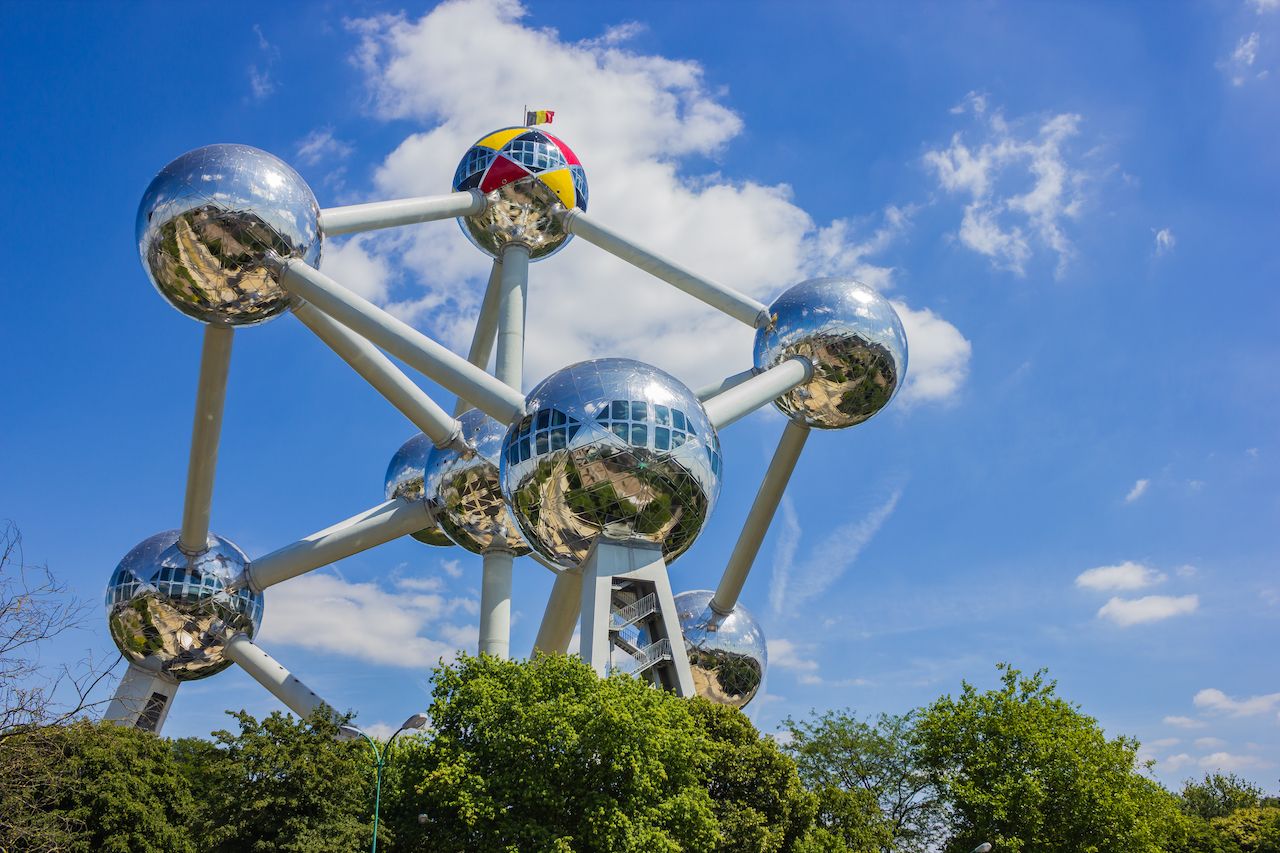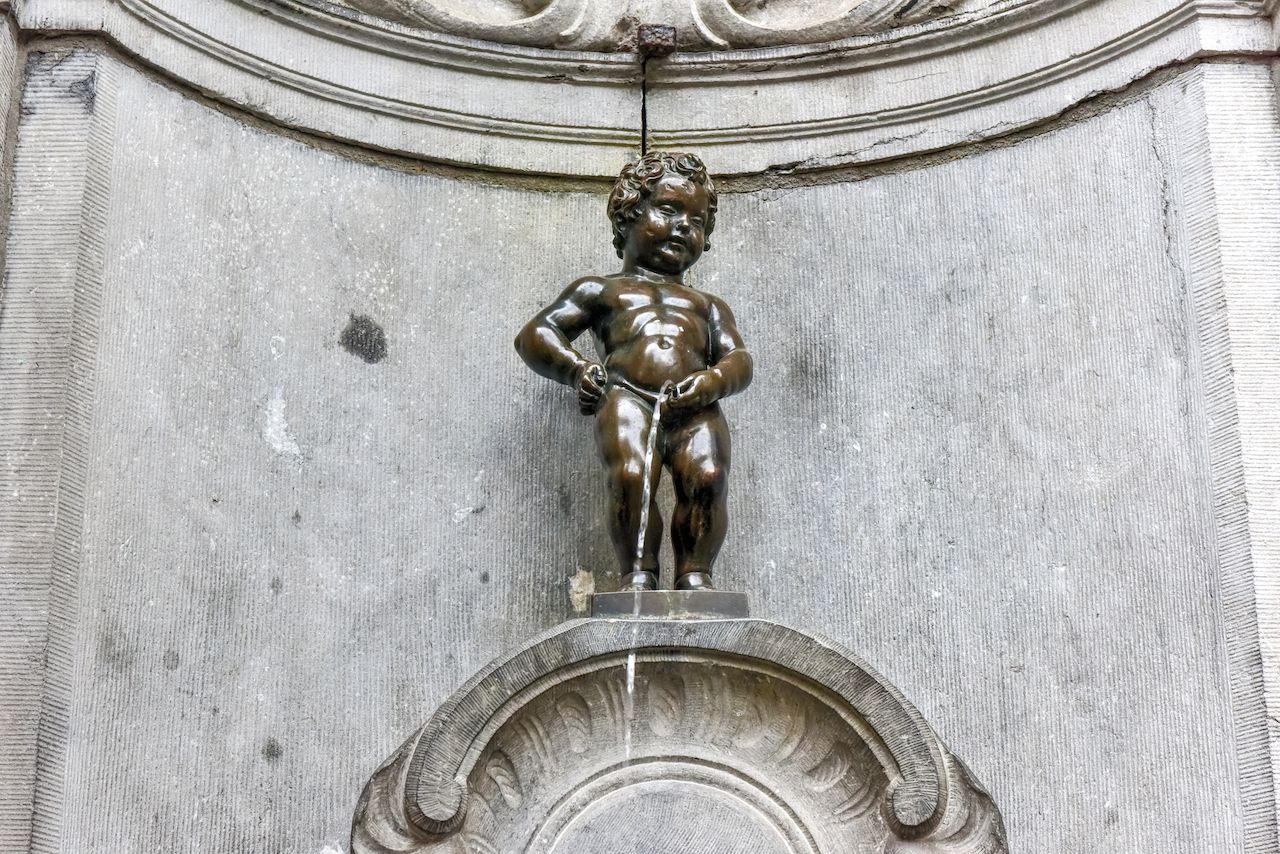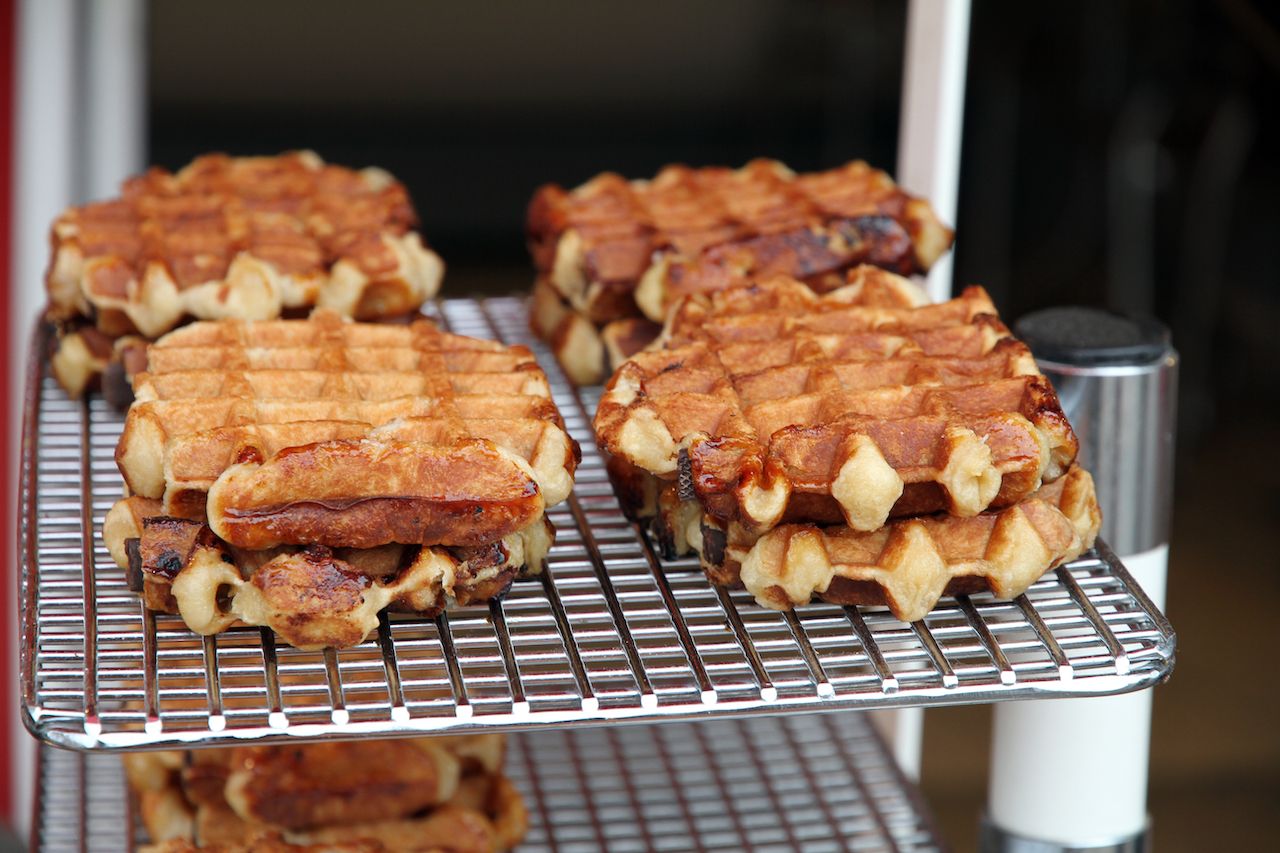Among Europe’s big cities, Brussels doesn’t always get the attention it deserves. Yet Belgium’s capital has prime architecture, public parks, and 19 municipalities, each with its own distinct vibe. These include trendy Ixelles, artsy Saint-Gilles, and the city center with its Grand-Place on the main square, surrounded by opulent buildings. Add to that a unique artistic sense, excellent cuisine, and multilingual conversation — French, Dutch, and German are all official languages, and English is widely spoken — and you have a lot to explore in one short weekend. Here are some ideas to get you started.


The 7 Most Fun (and Delicious) Things to Do in Brussels, Belgium
1. Go up inside the Atomium.

Photo: brunocoelho/Shutterstock
This shiny metallic attraction in Heysel Plateau in the north of Brussels was originally built for the 1958 Brussels World’s Fair, or Expo 58, but now serves as a timepiece. Designed to depict the Atomic Age, this set of nine spheres was supposed to be dismantled once the World’s Fair was over. However, the fixture won Belgians over and became a beloved landmark.
It was restored in 2006, and now you can go inside and up escalators to two levels. Take in the permanent and temporary exhibits, and more importantly, orient yourself with an overhead panoramic view of Brussels. To enjoy the view longer, stay for a meal of Belgian dishes or seasonal specialties within Atomium’s restaurant within its top sphere. (Reserve a table in advance, to be safe.)
2. Giggle at the Manneken Pis statue.

Photo: Felix Lipov/Shutterstock
This bronze, pint-size statue of a naked boy urinating in a fountain sounds gross, but this little guy has been a Brussels’ city center fixture since the 15th century. Manneken Pis has had some stories about him, from being a boy who saved Brussels from burning down due to peeing on the flames to being the lost son of a rich man who found him taking a whiz at a street corner.
In reality, Manneken Pis had an important job back in the early 1600s: aiding in the distribution of water through a system by standing on a column and pouring water into a stone basin up until the 19th century. He’s also been through some bumps, having survived a bombardment of Brussels in 1695 and being stolen but returned a few times. (The original one sits in the Brussels City Museum.) These days, Manneken Pis gets dressed up throughout the year in attire based on themes or events. In 2017, the GardeRobe MannekenPis opened as a costume museum that displays and stores his wardrobe.
3. Savor a proper Belgian waffle.

Photo: Ana del Castillo/Shutterstock
You’ve never really had a waffle until you’ve tried a Belgian waffle, a special treat that’s very simple but incredibly tasty. The waffles are traditionally made with yeast, which gives them an airy texture and makes them crispy on the outside but light and fluffy on the inside. Try a Brussels-style waffle, which comes topped with powdered sugar and a dollop of whipped cream or a drizzle of melted chocolate. Another waffle version is the Liège, which has an oval shape and is sweetened with pearl sugar, compressed nibs of sugar.
